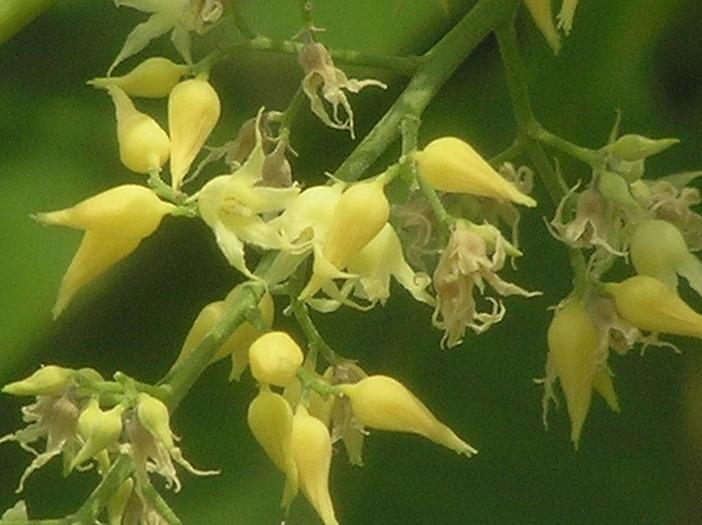Rubber Tree
(Hevea brasiliensis)
Rubber Tree (Hevea brasiliensis)
/
/

阿橋花譜 HQ Flower Guide
CC BY-SA 2.0
Image By:
阿橋花譜 HQ Flower Guide
Recorded By:
Copyright:
CC BY-SA 2.0
Copyright Notice:
Photo by: 阿橋花譜 HQ Flower Guide | License Type: CC BY-SA 2.0 | License URL: https://creativecommons.org/licenses/by-sa/2.0/ | Uploader: 阿橋 KHQ | Publisher: Flickr

























Estimated Native Range
Summary
Hevea brasiliensis, commonly known as Rubber Tree, is an evergreen tree native to the rainforests of the Amazon Basin and other tropical areas in South America. In its natural habitat, it thrives in hot, humid conditions along riverbanks and in lowland tropical forests, where it plays a crucial role in the ecosystem. Mature trees in the wild can reach up to 43 meters (141 feet), but when cultivated for latex production, they are kept smaller to optimize yield. The Rubber Tree has a cylindrical trunk that may exhibit a swollen, bottle-shaped base, an adaptation to its native wet environments.
The Rubber Tree is valued for its production of latex, which is the primary source of natural rubber, a vital industrial commodity. The tree’s flowers are small, with separate male and female flowers on the same tree (monoecious). They are creamy-yellow, pungent, and lack petals. The fruit is a large, three-lobed capsule that explosively dehisces to release the seeds. In cultivation, the Rubber Tree requires full sun and consistent moisture, but it is adaptable to a range of soil drainage conditions. It is not typically grown for ornamental purposes due to its large size and the specialized nature of rubber harvesting. However, it can be used in reforestation projects and large-scale landscaping in suitable climates. Challenges in cultivation include vulnerability to leaf blight, South American leaf blight being the most devastating, and the need for careful management to prevent soil depletion.CC BY-SA 4.0
The Rubber Tree is valued for its production of latex, which is the primary source of natural rubber, a vital industrial commodity. The tree’s flowers are small, with separate male and female flowers on the same tree (monoecious). They are creamy-yellow, pungent, and lack petals. The fruit is a large, three-lobed capsule that explosively dehisces to release the seeds. In cultivation, the Rubber Tree requires full sun and consistent moisture, but it is adaptable to a range of soil drainage conditions. It is not typically grown for ornamental purposes due to its large size and the specialized nature of rubber harvesting. However, it can be used in reforestation projects and large-scale landscaping in suitable climates. Challenges in cultivation include vulnerability to leaf blight, South American leaf blight being the most devastating, and the need for careful management to prevent soil depletion.CC BY-SA 4.0
Plant Description
- Plant Type: Tree
- Height: 50-60 feet
- Width: 40-55 feet
- Growth Rate: Rapid
- Flower Color: Cream, Yellow, Green
- Flowering Season: Summer
- Leaf Retention: Evergreen
Growth Requirements
- Sun: Full Sun
- Water: Medium
- Drainage: Slow, Medium, Fast
Common Uses
Drought Tolerant
Natural Habitat
Native to the rainforests of the Amazon Basin and other tropical areas in South America
Other Names
Common Names: Hevea, Rubbertree, Rubber Plant, Para Rubber, Sharinga Tree, Seringueira, Natural Rubber, Amazonas-Parakautschukbaum, Parakautschukbaum, Echter Federharzbaum
Scientific Names: , Hevea brasiliensis, Hevea randiana, Siphonia brasiliensis, Hevea brasiliensis var. stylosa, Hevea brasiliensis var. janeirensis, Hevea brasiliensis var. randiana, Hevea janeirensis, Hevea brasiliensis f. acreana, Hevea brasiliensis f. angustifolia
GBIF Accepted Name: Hevea brasiliensis (Willd. ex A.Juss.) Müll.Arg.